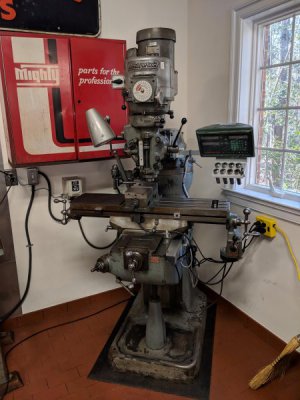I'm new to the forum and new (8 months) to owning a 36" Bridgeport. I came to the realization I needed to adjust the backlash on the X+Y (backlash on both wass close to 100) so I watched the video and gave it a shot. The screws could barely turn, but I did tighten them as much as possible. No real improvement, and certainly not right. I removed the Y screw and clearly it is worn. I measured about 100 thousandths on the crest where it was not worn (on the ends) and 0.065 on the crest in the center. So, I have a new set of screws and nuts on the way. Most expensive screws I ever bought!
To change the nuts, is it possible to slide the table to the left without removing it and replace the nuts? Otherwise it looks like it weights over 250 pounds, so I need to rig an engine support it when I slide it off.
I've also read no need to worry about backlash with a DRO, but it is so bad when I machine something it "hops" or "jumps" even when I am going up or down hill. So I'm assuming I need to fix the play in table?
Thanks in advance for any thoughts.
Wayne

To change the nuts, is it possible to slide the table to the left without removing it and replace the nuts? Otherwise it looks like it weights over 250 pounds, so I need to rig an engine support it when I slide it off.
I've also read no need to worry about backlash with a DRO, but it is so bad when I machine something it "hops" or "jumps" even when I am going up or down hill. So I'm assuming I need to fix the play in table?
Thanks in advance for any thoughts.
Wayne


